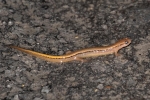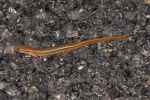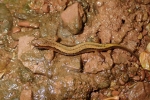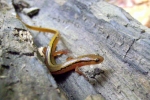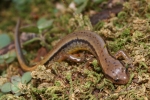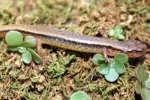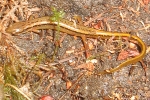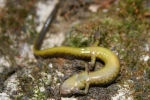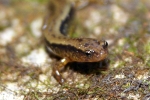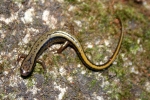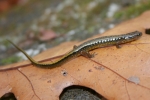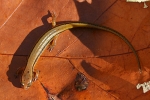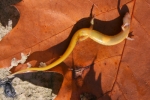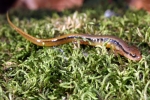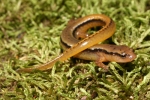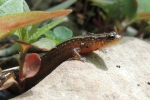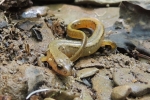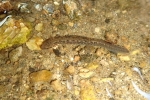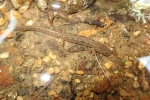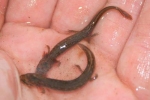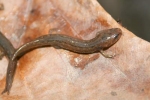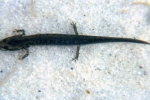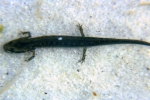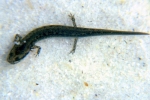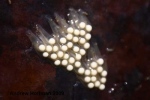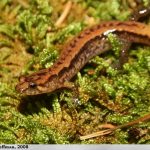Northern Two-lined Salamander
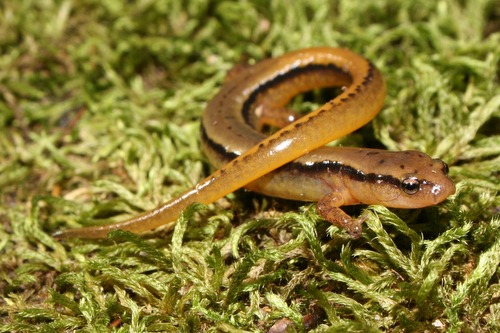
Scientific Name: Eurycea bislineata
Size: 2.5-4.75 inches (6.4-12.1 cm) in length
Status: Abundant
Habitat:
Stream side along small to medium sized streams, springs, and hillside seeps with sandy to gravel substrate and rock or log cover.
Description:
Small species. The background color is greenish to yellowish brown with a dark brown or black dorsolateral stripe on each side of the body extending from the posterior margin of the eye to the base of the tail. The center (vertebral) band between the dorsolateral strips has a series of small brown or black spots that vary in number and position. They can be random or form a medial broken stripe. The sides below the dorsolateral stripes are maculated with small irregular black spots that also occur on the sides of the tail and dorsal surface of the limbs. The underside is pale or yellow.
- The dorsal background color is greenish to yellowish brown with a dark brown to black dorsolateral stripe on each side of the body extending from the posterior margin of the eye to the base of the tail.
- The vertebral band between the dorsolateral strips has a series of small brown or black spots that vary in number and position. They can be random or form a medial broken stripe.
- The sides below the dorsolateral stripes are maculated with small irregular black spots that also occur on the sides of the tail and dorsal surface of the limbs.
- The ventral surfaces are pale to yellow.
- The legs are well-developed
- The tail is laterally compressed with a moderately developed keel.
- The head is short and slender with a rounded snout.
- 13-16 costal grooves
- The dorsal is dusky colored with 6-9 pairs of light dorsolateral spots.
- Stream-type.
- The gills are small and moderately branched.
- The body is elongate and slender.
- The limbs are well-developed.
- The caudal fin is moderate.
- The dorsal background color is yellowish green with a brownish net lick pattern.
- The ventral is whitish yellow.


References:
- Hulse, C. and McCoy C. J. and Ellen Censky ,1998. Amphibians and Reptiles of Pennsylvania and the Northeast. 86-88pp.
- Petranka, James W. ,1998. Salamanders of the United States and Canada. 241-248pp.
- Jason Poston
- John Smith
- Billy Brown
- Tom Diez
- Andrew Hoffman
- Sebastian Harris
- Nate Nazdrowicz
- Kyle Fawcett
Heads up!
Please contribute your observation of this and other herps to the Pennsylvania Amphibian and Reptile Survey. Your help is needed.
